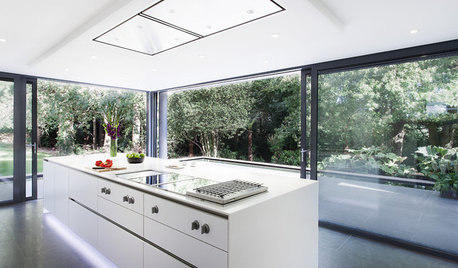Recommendations for a 400 Watt MH Ballast
rokal
16 years ago
Related Stories

KITCHEN APPLIANCESDisappearing Range Hoods: A New Trend?
Concealed exhaust fans cut visual clutter in the kitchen
Full StoryMore Discussions
Can anyone recommend a 400 Watt Metal Halide Remote Ballast and/or complete kit? Is there anything special I should be watching out for?
I am willing to "cry once" and spend the up front cost for a digital/electronic ballast.
Does anyone have experience with any of these:
Future-Brite 400 Watt - 120 Volt Remote Digital Ballast
Galaxy 400 Watt Digital MH / HPS Ballast
Lumatek 400 Watt Electronic (digital) ballast 120 Volt
DIGITAL GREENHOUSE 400 watt HPS & MH Ballast
Any recommendations or advice would be appreciated. I am looking to grow tropicals in a 4'x4' area.
Thanks,
Rokal

object16
shrubs_n_bulbs
Related Professionals
Fort Lee Landscape Architects & Landscape Designers · Sand Springs Landscape Architects & Landscape Designers · Simi Valley Landscape Architects & Landscape Designers · Bridgeport Landscape Contractors · Fridley Landscape Contractors · Palm Beach Gardens Landscape Contractors · Kingsburg Landscape Contractors · Carson Fence Contractors · Columbia Fence Contractors · Delhi Fence Contractors · Shorewood Fence Contractors · Cedar Rapids Roofing & Gutters · Durham Roofing & Gutters · Milton Roofing & Gutters · Plainfield Roofing & GuttersrokalOriginal Author
object16
shrubs_n_bulbs
rokalOriginal Author
shrubs_n_bulbs
object16
shrubs_n_bulbs
rokalOriginal Author
shrubs_n_bulbs
lermer
shrubs_n_bulbs
dcarch7 d c f l a s h 7 @ y a h o o . c o m
object16
object16
shrubs_n_bulbs
object16
rokalOriginal Author
object16
shrubs_n_bulbs
lermer
shrubs_n_bulbs
object16
rokalOriginal Author
object16
rokalOriginal Author
object16
lermer
rokalOriginal Author
object16
rokalOriginal Author
object16
lermer
zink
dcarch7 d c f l a s h 7 @ y a h o o . c o m
zink
lermer
hikmet1001
rokalOriginal Author
lermer
rokalOriginal Author
lermer
rokalOriginal Author
zink
lermer
rokalOriginal Author
lermer